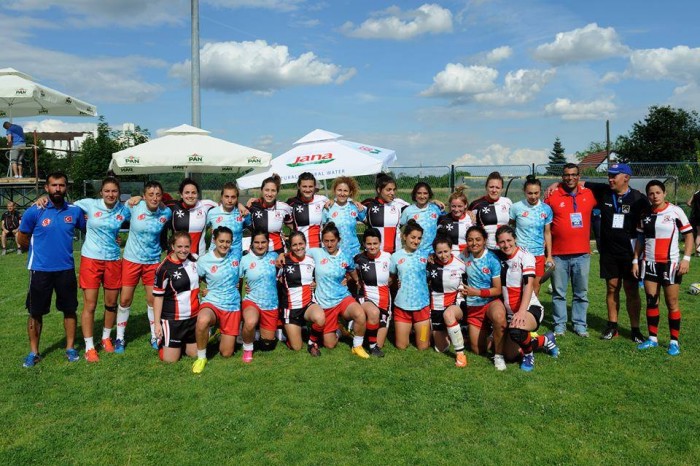Euro Conference evidence of 7s expansion
Rugby Europe have been forced to expand the third tier sevens tournament from 12 to 16 teams this year – real evidence of the growth of women’s rugby across the continent.
Published by John Birch, July 22nd, 2016
3 minute read

Malta and Turkey after the Plate final last year (Photo: Malta RFU)
The Women’s European Conference Sevens takes place this weekend in Sarajevo. Formerly “Division B” of Rugby Europe’s Sevens Championship (below the Grand Prix and what is now the European Trophy), the tournament featured 12 national teams for the first time only as recently as 2013. This year there are 15 national teams, plus a “Balkans Select”. Of the 48 members of Rugby Europe only nine (Azerbaijan, Belarus, Cyprus, Estonia, Greece, Iceland, Liechtenstein, Monaco, San Marino) have never entered a women’s team in the Championship, and of those Greece have had an active women’s team for 3-4 years, and Iceland’s women play their first tournament in Denmark next month.
Despite the expansion of the tournament all of the nations taking part have played before. Andorra return having last appeared in 2013, and Slovakia and Bosnia are back having missed out last year.
The European Conference is only two steps away from the Grand Prix, but is a world away in other respects. Previous year’s form counts for little when teams only have a small base of players to select from – retirements and non-availability can make a huge difference.
An example of that is Lithuania. On paper, they and Georgia and start as favourites to win promotion because they were only relegated from what is now the European Trophy last year. However, despite hiring in a top Italian sevens coach and flying in three experienced players from Ireland, England and Norway, it is suggested that they may struggle to live up to their second-place seeding, and may not even make the quarter-finals as the absence of experienced players from last year’s team due to injury, retirement or other family reasons has left selectors with little more than 30 eligible and available players nationwide.
So who else might be competing for a place in next year’s Trophy? Croatia and Latvia missed out at the semi-final stage last year, and must be in the running again; Turkey have got better and better since debuting in 2013; most of Luxembourg’s players play for the same club in the Belgian league where they had a great season last year; rugby in Malta has a strong background and is expanding; and it’s hard to believe that a nation with as long a women’s rugby history as Austria could end up in only 11thplace again. In short, everyone travelling to Sarajevo will have realistic hopes for glory.
Draw and scores